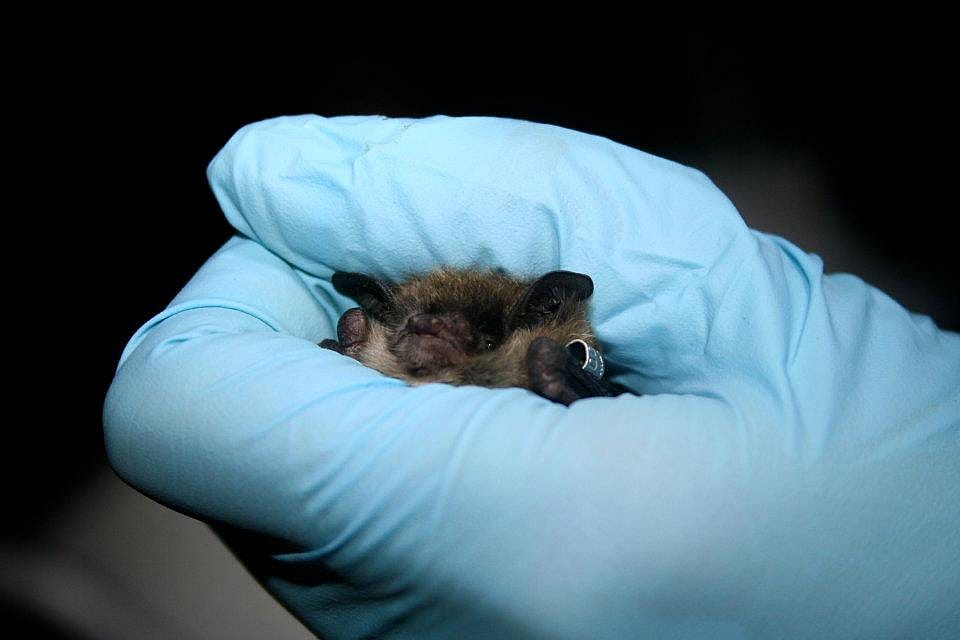
White-Nose Syndrome: A Battle for the Bats
In the late winter of 2006, thousands of bats began to die in the northeastern United States. Not long before they should have been emerging from their caves at the end of hibernation, they were instead combatting hypothermia and starvation. Within about five years, millions of bats had died. But what was the culprit?

Psuedogymnoascus destructans, or Pd, is a fungus that only attacks bats, causing what is now known as white-nose syndrome. Pd likely traveled to North America from Europe, but the cause of that spread is still a mystery. The fungus, unknown to science before cavers photographed it in 2006, often results in a fuzzy white growth on bats’ noses and faces. Rather than staying in torpor, a state of lowered body temperature and activity, bats infected with Pd awake more frequently and for longer periods. They deplete fat stores far more rapidly and some hungry bats will even leave their hibernacula, dying of exposure in the cold winter temperatures. Since it tends to attack exposed skin, bats with Pd sometimes also get holes and scarring in their wings.

For many species of non-migratory bats, white-nose syndrome (WNS) can be fatal in up to 100% of cases. While Pd is present in Europe and Asia, bat populations in those regions have experienced no significant effects from WNS. One quarter of the 47 bat species in the United States have shown symptoms of WNS and Pd has been detected in 9 others. Some species, like little brown (Myotis lucifugus), tricolored (Perimyotis subflavus), and northern long-eared bats (Myotis septentrionalis), are affected more than others. At least half of the bat species found in the US are reliant on hibernation, during which they are most vulnerable to WNS.

After those first cases were reported in 2006 and 2007, WNS has progressively spread further west. In 2021, it was detected in Wyoming for the first time at Fort Laramie National Historic Site and Devils Tower National Monument. Wyoming was the 37th state to confirm the presence of WNS.
In many cases, humans are the cause of this spread. When people visit caves where Pd is present, spores of the fungus stick to clothing and other objects. Then, if someone visits a different site without properly disinfecting their gear, the spores can spread through the new cave. Since Pd doesn’t travel through the air, bats become infected by touching cave walls and other surfaces where it grows or by touching infected bats.

Other than preventing human disturbance during hibernation and avoiding the spread of Pd by people, there are currently few practical solutions to stopping this disease. Luckily, some groups are working to develop vaccines.
In early August, Draper staff joined in for a night to help with a USGS vaccination trial. The group of about fifteen people, including researchers from several state and federal agencies and universities in the region, worked to measure and identify the bats before banding them in case of recapture and dosing them with the vaccine. The trial took place at a site near water and plenty of roosting spots. Work began around 7:00 pm and lasted until the early hours of the next day. During the two nights of the trial, about 200 bats were processed.

Work like this hopefully will someday save bat species from the devastating effects of Pd and white-nose syndrome. It’s important to protect the bats from this nonnative fungus because of how they benefit the rest of the ecosystem. Bats, being indicator species, are a measure of health for the areas they inhabit. WNS not only affects bats but also the web of systems that rely on them for pollination, pest control, and a variety of other services.
Written By
Bliss Bonner
Bliss Bonner is the 2024 Curatorial Intern with the Draper Natural History Museum. Having lived near Yellowstone National Park and its surrounding ecosystems for her entire life, she has always been deeply interested in the natural world and plans to study science communication at the University of Wyoming. While Bliss loves to travel and see other parts of the world, she is equally passionate about what the Cody area offers. She spends much of her time exploring the mountains and looking for birds, and she also enjoys creative arts and writing.











